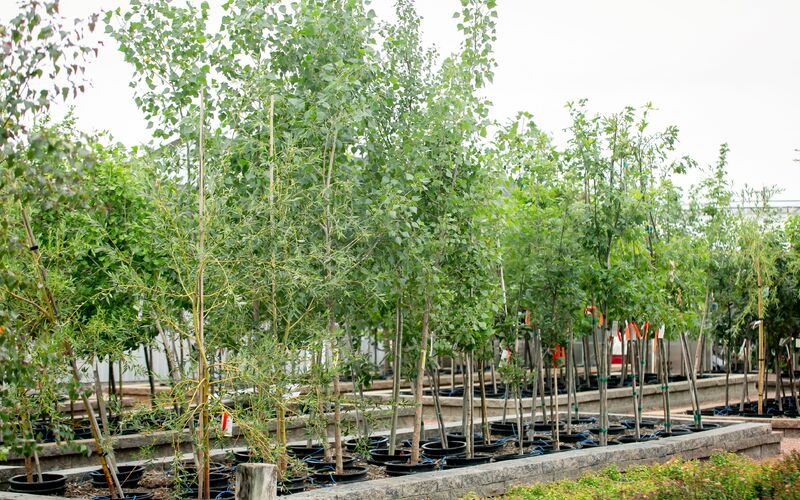
As a landscape solutions company, we are always advocating for trees and all the good things they do for our world. Not only do trees add immeasurable beauty to any space, but they help protect us from noise, pollution, wind, drifting snow and soil erosion. They provide shade in the heat of summer, are a habitat for birds and wildlife and add value to our property and our lives. Each year, we sell hundreds of trees. Some of these trees go home with people who plant them on their own. Some of them are installed by our experts. And while most of these trees thrive and do well for decades, each year we have a handful of customers who tell us they had a tree die. They don’t know why. They don’t know how. But in almost every case, it doesn’t take us long to figure out the cause. There are about 20 common mistakes people make that can kill a tree. For the sake of your trees, here they are:
How to Kill a Tree:
1. Dig a hole too deep and then fill it with gravel that collects water and drowns the roots.
2. Dig a hole to narrow so the roots can’t spread out.
3. Plant the tree too close to a structure so it has no room to grow.
4. Nail or attach items to your tree, damaging the bark and girdling the branches.
5. Leave your trees staked until the guy wire girdles the trunk.
6. Leave wrap around the trunk to constrict growth and encourage bark rot.
7. Pile excessive mulch around the trunk to encourage bark rot and rodent damage.
8. Put non-porous black plastic under your mulch so water can’t get to the tree roots.
9. Leave the treated or synthetic burlap around the roots so they can’t grow.
10. Leave branch stubs when you prune.
11. Cut through the roots when digging or planting near the tree.
12. Damage the roots or the trunk with your lawn equipment.
13. Spray herbicides near the tree trunk.
14. Leave broken branches unpruned to encourage pests.
15. Coat pruning cuts with paint or sealer.
16. Ignore insect or disease damage.
17. Leave crossing branches unpruned so they rub together, creating bark wounds.
18. Leave co-dominate branch leaders to encourage “V” growth that splits in big windstorms.
19. “Top” off your trees to encourage water sprouts.
20. Leave the ball lacing in place when you plant your balled and burlapped tree.
If you notice a problem with your trees—discolored or falling leaves outside of fall, bark rot, insect damage—do not hesitate to ask us for help. Many problems can be treated and your trees can be saved. If you are uncertain about planting a tree on your own, we offer an installation service and all the products to get your trees off to a great start. Now is the best time of the year to plant your trees, and we have a gorgeous selection in stock. Thank you for taking care of your amazing trees and for supporting

